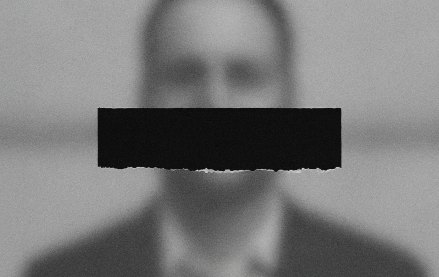Join us Dec. 1-3 in New Orleans for the Digiday Programmatic Marketing Summit
Goodbye, dark posts: How Facebook’s and Twitter’s ad-transparency tools work

On June 28, Facebook and Twitter both launched their transparency tools for advertising that will make all ads run on the platforms visible. These tools, which operate independently, mean an end to dark posts, far more access to information for consumers and for advertisers, and hopefully, less risk of foreign interference in political elections.
The transparency centers are part of the companies’ efforts to appease the world (read: government regulators) following Russian trolls using Facebook, Twitter and other online platforms to manipulate U.S. voters during the 2016 U.S. presidential election. Both Facebook and Twitter launched new policies for political advertisers, such as registering to run political ads, in May. Here’s what marketers need to know about this step.
Haven’t we known about this for a while?
The launch of these ad-transparency tools have been a long time coming. Facebook announced the tool in April and has been testing it in Canada. On June 28, Facebook’s tool went live globally. Twitter promised to create such a tool during a congressional hearing on October, and it also went live around the same time as Facebook’s. According to spokespeople from both companies, the launches were not coordinated.
How does Facebook’s ad-transparency tool work?
Every Facebook Page carries a new button called “Info and Ads.” That new section will display the ads the Page is currently running across Facebook, Instagram, Messenger and Facebook’s partner network. Facebook also will have a button to report each ad. Facebook also will publicly share more information about Pages. Pages will display changes to their names along with the date they were created. Facebook said it plans to add more information in the coming weeks.
Facebook introduced its archive of ads with political content in May, starting with U.S. ads. Facebook announced on June 28 that it will launch labeling of political ads and the archive for Brazil ads ahead of the general election in October. Facebook advertisers who wish to run political ads in Brazil can begin to register next month. Ads in the archive last for seven years.
How does Twitter’s ad-transparency tool work?
Anyone can view ads on Twitter by searching for a specific handle. That search will bring up the ad creative for all campaigns that handle has run in the last seven days. For political ads run in the U.S., users will be able to see billing information, ad spending, impression data and demographic targeting data.
Any important differences between the two?
Facebook requires people to sign into a Facebook account to access the tool. Twitter doesn’t require users to have a Twitter account. Facebook only shows ads that are currently running across its properties, unless the ads are related to politics, and then they are archived for the next seven years. Twitter shows all nonpolitical ads from the past seven days. Twitter’s transparency center will only include U.S. political campaigning ads, not international ones, for now.
Is it bad that everyone can see my ads now?
Facebook chief operations officer Sheryl Sandberg would like you to think no.
“The majority of advertisers were very positive [about this update]. They’re standing behind the ads they’re putting up. There’s definitely some out there with concerns and with competitors seeing the ads they’re running,” Sandberg said during the launch event.
Amanda Grant, GroupM’s head of social for the U.S., said the move was positive and didn’t expect any drastic changes in how her agency operates with the platforms.
“We see these types of transparent moves as a positive signal and ways to keep tactics and behaviors more brand safe for users and advertisers. As these changes do not impact scale or performance, we do not envision any change in forecast spend or creative,” Grant said.
Any unintended consequences?
Now, marketers can easily check out what their competitors are doing.
“Competitive insights are only one factor of holistic planning, and as we plan and focus primarily on client objectives and tactics that achieve those goals, our approach remains consistent,” Grant said.
Can I see all of a brand’s spending, or do I have to go post by post?
For now, you’d have to go post by post. Rob Leathern, Facebook’s director of product management, said that will change in the future. Facebook is releasing an application programming interface later this summer so people can aggregate information.
Is this going to cost Facebook a lot of money and stress?
Probably.
“We don’t like the delays in the system. More manual review and more checks mean more delays,” Sandberg said. “Human beings don’t review the way machines review. Part of the cost of the checks and balances we’re putting in the system are those delays. We’re going to do everything we can to minimize them.”
Haven’t publishers been frustrated by these changes, too?
If a publisher pays to boost a story related to politics in the news feed, Facebook will put the ad in its political archive. Michael Golden, president of WAN-IFRA, said it “confounds the distinction between journalism and political advocacy.”
Sandberg defended the choice during the press event.
“We had a choice. We decided that our goal is transparency. We’re just erring on the side of being more transparent,” she said. “We decided it was better to be broader and more inclusive because people can see everything, but it was a hard decision.”
Will all of this change soon?
Expect changes to come in both Facebook’s and Twitter’s tools. Both Facebook and Twitter said they’re still evaluating whether decisions like the choice of storing for seven years and seven days, respectively, makes sense.
Both tools are also expanding internationally. As Twitter’s blog post said, the company is “examining how to adapt and internationalize both political campaigning and issue ads policies.”
More in Marketing

How Kind snack bars is using AI to curb creative, marketing costs at business ‘inflection point’
Adopting generative AI and synthetic audiences, Kind North America’s marketing overhaul is cutting creative time and shifting agencies into strategic partners.

As would-be buyers and critics circle, WPP’s siege mentality deepens
The London holding company is beset by challenges and critics. A bunker philosophy and pushback may be emerging in response.

‘We’re in a league of our own’: How X is planning to take over the World Cup, starting with Draw Day
The platform is using the tournament’s draw as an early proving ground for a broader strategy to reassert its creator content around live events.








